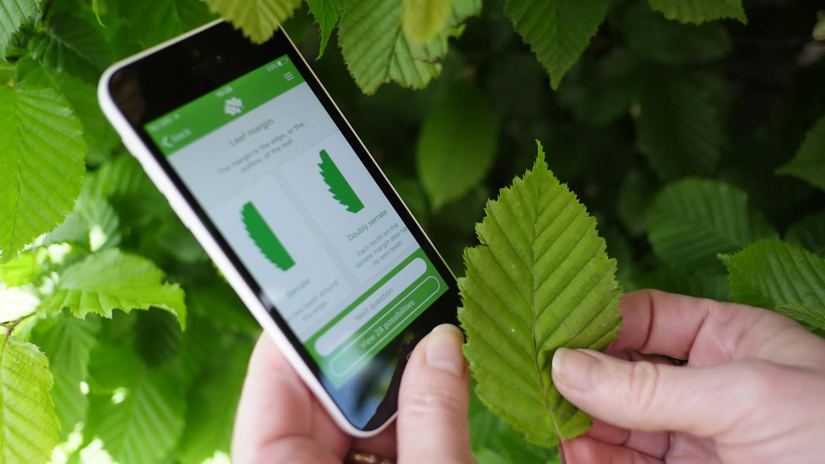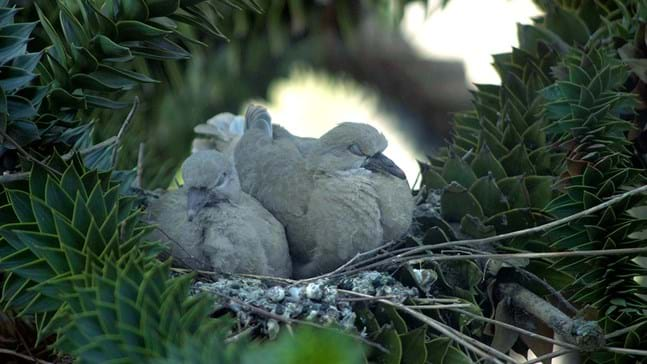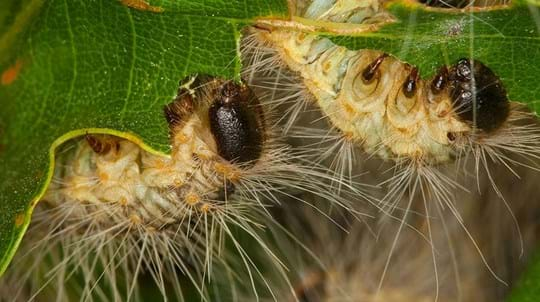
Credit: Charistoone Photo / Alamy Stock Photo
Leaves
Green, spiky, stiff, leathery, glossy and triangular-shaped. They are thick and broad at the base, sharp at the edges and tips, and are arranged in a spiral around the trunk.
Distinctive and spiky, the monkey puzzle has been making strong impressions since dinosaurs roamed the earth. These days, jays and squirrels feast on its nuts.
Common names: monkey puzzle, Chilean pine, monkey tail tree, araucaria
Scientific name: Araucaria araucana
Family: Araucariaceae
Origin: non-native
Reaching up to 30m in height, monkey puzzle has a stout, almost cylindrical trunk with smooth bark that has a purplish-brown colour. The base of a large tree can resemble an elephant's foot.
Look out for: the distinctive leathery leaves and the sharply pointed scales of the cones.
Identified in winter by: its evergreen features as it keeps its leaves year-round.

Credit: Charistoone Photo / Alamy Stock Photo
Green, spiky, stiff, leathery, glossy and triangular-shaped. They are thick and broad at the base, sharp at the edges and tips, and are arranged in a spiral around the trunk.

Credit: Krystyna Szylecka / Alamy Stock Photo
Monkey puzzles are dioecious, meaning male and female flowers grow on separate trees. Male catkins (pictured), are 10-centimetre-long clusters of narrow green stamens which turn yellow and then brown at the end of summer. Female catkins are spiny cones.

Credit: Chris Warham / Alamy Stock Photo
Cones are green and gold, with hair-like edges. They grow at the tips of branches. Cones ripen over two or three years and eventually turn brown and release large brown seeds.

Download our free Tree ID app for Android and iPhone to identify the UK's native and non-native trees. It's an A-Z tree guide in your pocket.
Download the appThis species has been around for 200 million years, when dinosaurs still roamed the earth. Its spine-like needles acted as protection from ancient grazing animals.
Monkey puzzle is native to central and southern Chile and western Argentina. It was first brought to the UK in 1795. It became very popular during the Victorian and Edwardian era and is now widely planted as an ornamental in parks and gardens.

Credit: Studio Beam / Alamy Stock Image
In its native South America, monkey puzzle is home to the slender-billed parakeet and over 70 species of endemic insects. In the UK, its seeds are dispersed by jays and squirrels.
The common name of 'monkey puzzle' was coined during the mid-1800s when Charles Austin, a noted barrister, on seeing the tree for the first time commented that climbing the spiny, spiralling branches would be a puzzle even for a monkey.
It is said that speaking while passing one will bring bad luck or cause you to grow a monkey's tail.
There is an old Fenland belief that planting a monkey puzzle on the edge of a graveyard would prevent the Devil from entering during a burial. This link with the Devil extends country-wide; many even believing that the Devil lives in the monkey puzzle tree.
It is possible that this story of the Devil living in the tree was invented by concerned parents trying to stop their children climbing the spiky branches.

Credit: Krystyna Szylecka / Alamy Stock Photo
In Europe and North America, monkey puzzles are planted as ornamental trees, although the seeds are also edible. The timber has been widely used in Chile.
Monkey puzzles are under threat in their native region of Chile due to over-harvesting.

Shop
We have single trees and tree packs to meet your needs, from wildlife to woodfuel. Delivery is free.
External link

Trees woods and wildlife
Learn more about the pests and diseases threatening our trees. Find out how to spot them, the symptoms and outlook, and how you can help.